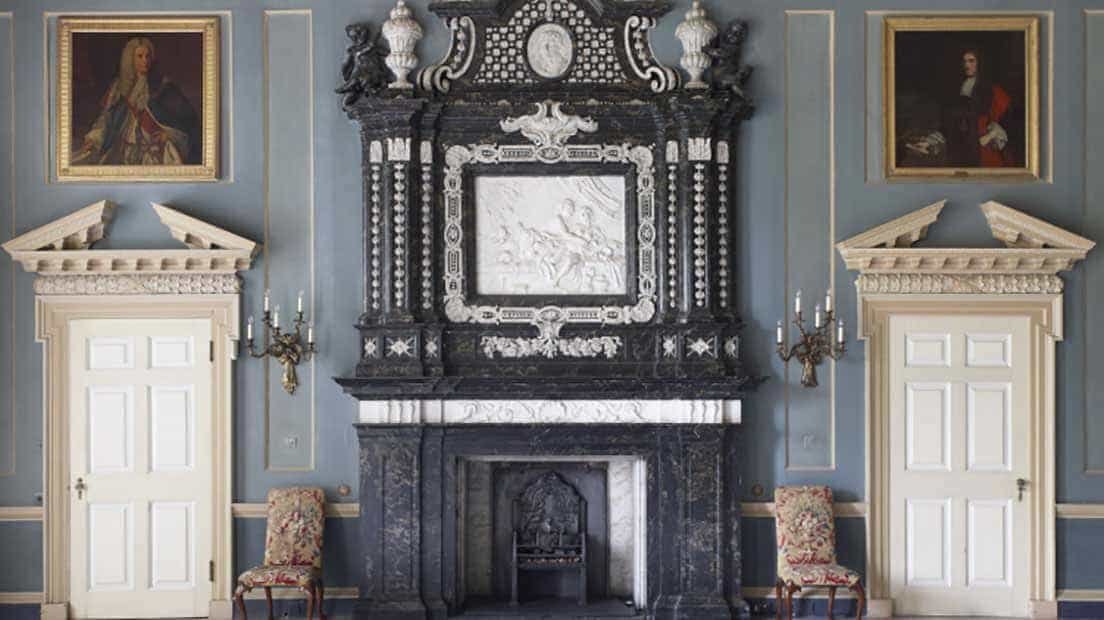
Our campaign
Let’s stand up for our heritage
The National Trust carries out a vital and complex task in looking after historic buildings, collections, gardens and countryside. It needs to maintain high standards and cannot afford the distraction of ephemeral trends and political activism.

Why does it matter?
We are long-time supporters of the National Trust who want to see the charity go from strength to strength while doing what it does best: looking after historic buildings, interiors and artefacts, gardens and countryside to the highest standard; drawing on a wide range of expertise; and making these places accessible to everyone.
The National Trust relies heavily on the support and goodwill of members and volunteers.
The donor families, tenants and all the curators who make decisions about the care and maintenance of properties and objects are also vital to the success of the organization. We would like to see all these people come together in pursuit of a common goal and gain a better understanding of one another’s needs and challenges.
High standards means accuracy, and it is important that the National Trust inspires confidence by representing the history of the places and objects in its care fairly and in a scholarly manner.
The National Trust is something our country can be very proud of. We would like to leave it in good shape to those who come after us, and that means managing its finances wisely. It also means nurturing the large body of expertise which has been built up over generations and ensuring that the skills and opportunities are there for future generations of curators to serve to the highest standard.
Read more about our concerns below.
Clandon Park cannot remain a burnt-out shell
The National Trust’s website announced in 2016 that ‘Given their historic and cultural significance, and the fact so many original features have survived, we believe we should restore the magnificent state rooms on the ground floor – the most architecturally important and beautiful rooms.’
After Uppark was destroyed by fire in 1989 the house was restored to its former glory, with some areas left unrestored to show the impact of the fire and give visitors an insight into the makings of an eighteenth-century building. After Clandon Park was destroyed by fire in 2015 there has been much dithering, and an aborted design competition. Eventually a plan emerged to repair the exterior only and present the interior where the glorious Marble Hall, Saloon and State Bedroom were as a roofless, burnt-out shell, with only the relatively undamaged Speakers’ Parlour to be restored. The National Trust received £63 million from the insurer, and we believe that this money should be used to bring these glorious state rooms by Giacomo Leoni back to life.
Caring for houses
The leaked report ‘Towards a 10-Year Vision for Places and Experiences’ proposes to ‘dial down’ the National Trust's role as a ‘major national cultural institution’.
Many of us are disappointed, if not shocked, by the charity's apparent reluctance to remain the nation's leading custodian of country houses. Looking after historic houses is an immensely complex task, and the report belittled the thoughtful and painstaking work, which goes into the presentation to the public of houses, both humble and grand.
These houses, regardless of the moral probity of their creators, are among the UK’s most significant cultural achievements. The public should be invited to enjoy, appreciate and understand them, but it is also important that the interpretation offered should not be trivialized.
While it is always desirable to give as many people as possible access to the fine houses in the care of the Trust, there is the risk that this can be done at the expense of the often delicate fabric of these old properties. Ancillary infrastructure such as tea rooms and car parks need to be designed carefully and sensitively. Where signage is needed, it should be well-designed, consistent and unintrusive.
Property managers understandably want to place their activities on a sound financial footing, but there is room for some further careful thought about how best to achieve this objective. Part of this is to establish the best possible understanding of the fabric of the houses and the best way to care for them in the long term.
The answer is not simple, but we hope that, with the involvement of a broad range of members and interested parties the best way forward will be found.
Donors & tenants
The Trust rightly gives a great deal of thought to its service to the public, and to providing the widest possible access to the widest possible range of buildings and sites.
It is also important to remember the donors, whose generosity made it possible in the first place to open these remarkable places to the public.
Another group that must not be forgotten is the tenants and tenant farmers who look after houses and landscapes from day to day and do invaluable work on behalf of all of us. It is vital to the long-term well-being of the Trust that they are fairly treated and that their contribution is properly valued and recognized.
Wanted: curators
Concerns over the management of properties go back over many years. It is vital that skilled specialists take part in strategic decision making, at a broader regional or national level, and for individual properties.
While the National Trust has faced a sharp decline in income as a result of the pandemic, we do not believe that making curators redundant was the right response. The saving will be too small to make a significant difference, while the loss of expertise and morale will likely do long-term damage.
The National Trust has a long history of collaborating and sharing expertise with other institutions and conservation bodies, such as the Society for the Protection of Ancient Buildings, the Georgian Group, the Victorian Society, and the Gardens Trust. It is vital that such collaboration continues in order to maintain the highest standards.
Leadership at a difficult time
High-quality leadership is always needed in an organization such as the National Trust, but particularly now with the additional challenges presented by the pandemic.
Many members were disappointed that more effort was not made to make green spaces available at an early stage. The opportunity to keep gardeners working, which could have been done safely, was not taken. Many have found the online booking system for parking frustrating. Many more are anxious about the many redundancies that have been made.
The leaked report offers a muddled vision of a National Trust which wants to banish visitors from its smaller country houses and disrupt their interiors but, at the same time, wants to become a prominent presence in urban centres.
Meanwhile, the public dismay over the report was not dealt with thoughtfully. The ‘Colonial Countryside’ project was not well defined, and the response to public concerns has not been well managed.
A strategy for the future?
The leaked report speaks regretfully of membership as a ‘cheap season ticket’.
Another way of looking at this would be that a membership card offers an affordable and valued escape from uninspiring urban and suburban life. A day out with the National Trust provides not only a much-needed tonic and source of relaxation for many, but also an immersive learning and aesthetic experience.
Undoubtedly, much of what the National Trust does amounts to tourism, but the tourist experience is a very special one. It is important that the Trust does not lose what makes it distinctive. If members believe in what the Trust is doing, they will give more generously, especially those who become better able to do so later in life, and remember the Trust in their wills, but this will not happen unless the Trust itself believes in what it is doing.
It needs to be on a financially sound footing; however, pursuing a profitable business model above all else will be self-defeating as members of the public lose faith and turn away.
Points of concern








